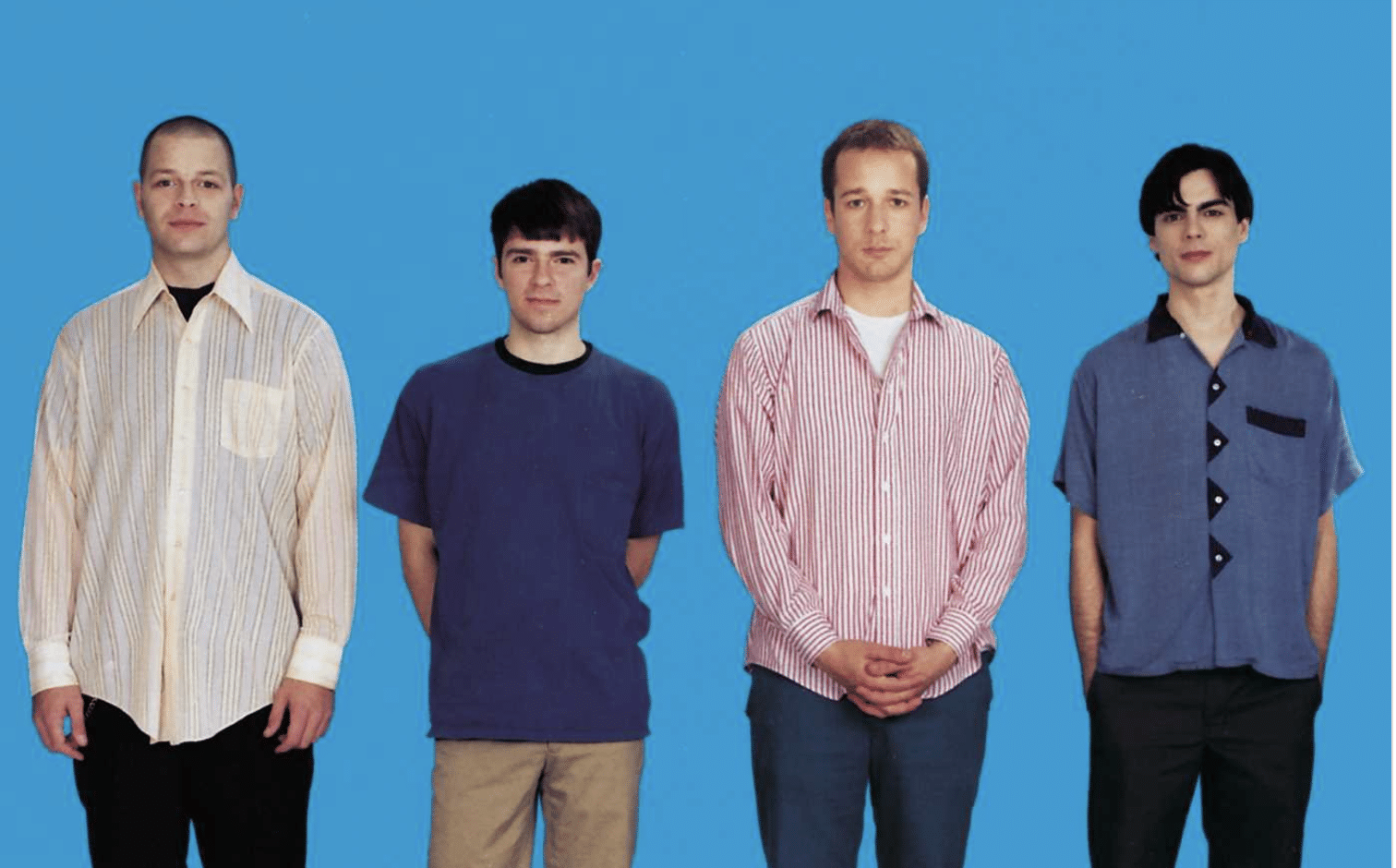For decades, music fans have watched bands come and go, but few have maintained the staying power of Weezer.
Their journey through the music industry has been marked by ups and downs, yet they’ve remained a notable presence in rock.
Many wonder how this group has managed to stay relevant for so long.
Well, this blog post will explore the key individuals who have contributed to Weezer’s enduring legacy.
We’ll look at the band’s lineup changes over the years, examine how these shifts impacted their sound, and consider the current members’ roles in shaping Weezer’s ongoing story.
By the end, you’ll gain insight into the human element behind this long-standing musical act.
Formation and Early Days

Weezer’s story began in Los Angeles in 1992 when four musicians with diverse backgrounds came together to form what would become an iconic alternative rock band.
Rivers Cuomo, Patrick Wilson, Matt Sharp, and Jason Cropper each brought their unique musical influences to the table, creating a blend that would set Weezer apart from their peers.
Interestingly, the band’s name has a personal touch – “Weezer” was Cuomo’s childhood nickname, adding a relatable element to their identity.
This connection between their name and Cuomo’s past hints at the personal nature of their music that fans would come to appreciate.
The band’s early days weren’t easy. They performed in small clubs around Los Angeles, often to sparse crowds.
These humble beginnings, while tough, were crucial in developing their skills and stage presence.
Despite the challenges, the band’s big break came through persistence. Matt Sharp’s efforts to secure a record deal finally paid off in 1993 when Geffen Records signed Weezer.
Weezer Band Members
1. Rivers Cuomo

Rivers Cuomo is Weezer’s visionary frontman who is known for his deeply introspective songwriting and distinctive vocals. His leadership has driven the band’s creative direction since its formation in 1992.
- Birth Date: June 13, 1970
- Role: Lead vocalist, guitarist, primary songwriter
2. Patrick Wilson

Patrick Wilson has been Weezer’s drummer since the band’s formation. He is known for his reliable and solid drumming style, and Wilson’s collaboration with Rivers Cuomo has been essential to the band’s rhythm section.
- Birth Date: February 1, 1969
- Role: Drummer, occasional backing vocals, songwriter
3. Matt Sharp

Matt Sharp was Weezer’s original bassist, playing a crucial role in the band’s early albums, The Blue Album and Pinkerton. Sharp left the band in 1998 to focus on his project, The Rentals.
- Birth Date: September 22, 1969
- Role: Bassist (1992–1998), backing vocals
4. Brian Bell
Brian Bell joined Weezer in 1993, replacing Jason Cropper as the band’s guitarist. His addition came at a pivotal time, right before the release of The Blue Album. Bell brought a unique flair to the band’s sound, and his consistent presence over the years has helped maintain Weezer’s musical stability.
- Birth Date: December 9, 1968
- Role: Guitarist, backing vocals
5. Scott Shriner

Scott Shriner became Weezer’s bassist in 2002, replacing Mikey Welsh. Known for his versatility, Shriner has been instrumental in allowing Weezer to experiment with different musical styles while staying true to their roots.
- Birth Date: July 11, 1965
- Role: Bassist (2002–present), backing vocals
The Blue Album: Rise to Stardom

Weezer’s self-titled debut, fondly known as The Blue Album, launched the band into the spotlight in 1994. This record marked a turning point, transforming Weezer from local LA favorites to mainstream stars.
The album’s success was driven by its catchy singles. “Undone – The Sweater Song,” “Buddy Holly,” and “Say It Ain’t So” became instant hits, dominating radio airwaves and MTV rotation.
These tracks showcased Weezer’s knack for blending power pop with alternative rock, creating a sound that was both familiar and fresh.
Former Cars frontman Ric Ocasek’s production was key in shaping the album’s sound.
He helped refine Weezer’s raw energy while maintaining their alternative edge, resulting in a polished yet authentic record.
The “Buddy Holly” music video, with its clever Happy Days theme, became a cultural phenomenon.
Its frequent rotation on MTV helped cement Weezer’s place in the public eye and showcased its strange, approachable image.
At its core, The Blue Album was defined by Cuomo’s introspective lyrics paired with the band’s catchy melodies.
This combination struck a chord with listeners, establishing Weezer as a unique voice in the crowded 90s alternative rock scene.
Shifting Lineups and Evolving Sound

After the release of Pinkerton, Weezer faced a challenging period that led to significant changes in both their lineup and sound.
The underwhelming reception of Pinkerton prompted a hiatus, during which bassist Matt Sharp left to focus on his project, The Rentals.
Rivers Cuomo, grappling with the album’s backlash, retreated to Harvard for a period of reflection.
This transitional phase saw Weezer restructure their lineup and reassess their musical direction. The addition of Scott Shriner as bassist in 2002 brought much-needed stability to the band.
Shriner’s versatility and Brian Bell’s consistent guitar work allowed Weezer to explore new musical territories while maintaining their core identity.
Weezer’s return from hiatus in 2001 with The Green Album marked a shift towards a simpler, more pop-driven sound.
This album, featuring hits like “Hash Pipe” and “Island in the Sun,” showcased the band’s ability to create catchy, radio-friendly tracks.
The change in style represented a reset, helping Weezer reconnect with a broader audience.
The lineup changes and evolution in sound allowed Weezer to tap into mainstream success once again.
From Mainstream Success to Meme Culture

- Mainstream Resurgence: Weezer’s 2005 album Make Believe brought renewed commercial success with hits like “Beverly Hills” and “Perfect Situation.” These tracks reaffirmed Weezer’s place in alternative rock and introduced them to a new generation of listeners.
- Innovative Marketing: The band’s creative approach to promotion, including the viral-filled “Pork and Beans” music video and the fan-centered Weezer Cruise, showcased their ability to blend music with pop culture trends.
- Meme Status: Weezer’s willingness to engage with internet culture transformed them into a meme phenomenon. The “Get Weezered” trend represent their unique position as both respected musicians and internet sensations.
- Digital Age Relevance: Weezer has maintained relevance across generations by begining its meme status and active participation in online culture. This approach has allowed them to bridge traditional rock stardom with modern digital culture, ensuring their ongoing popularity.
Longevity and Recent Projects

1. Weezer’s Enduring Musical Evolution
Throughout their career, Weezer has shown a remarkable ability to adapt and grow.
Albums like The White Album (2016) and Pacific Daydream (2017) showcase their willingness to experiment with different sounds.
The White Album revisited their rock roots, while Pacific Daydream incorporated more pop-oriented elements. This flexibility has kept Weezer relevant in a changing music landscape.
2. The SZNZ Project: A Bold New Concept
In 2022, Weezer started on the ambitious SZNZ Project, a series of four EPs themed around the seasons.
This concept-based approach allowed the band to explore diverse musical styles while maintaining a cohesive theme.
Each EP captured the essence of its respective season, demonstrating Weezer’s commitment to artistic growth and innovation.
3. Legacy and Impact
- Crafting a Lasting Impression: Weezer’s ability to create catchy, memorable songs across multiple decades has solidified their place in rock history. From early hits to recent explorations, their music connects with long-time fans and new listeners.
- Beginning Fan Culture: The band has maintained a strong connection with its audience by adapting internet culture and engaging with fans online. This approach has helped Weezer build a loyal following that appreciates their musical evolution.
- Navigating the Music Industry: Weezer’s success in adapting to industry changes while staying true to its core sound has been key to its longevity. Its journey through various musical trends and its ability to produce innovative content have established it as one of alternative rock’s most lasting acts.
Conclusion
As we wrap up our journey through Weezer’s evolution, it’s clear that their story is more than just a tale of musical success. It’s an example of adaptability, creativity, and the power of beginning change.
From their early days in Los Angeles to becoming internet sensations, Weezer has shown that longevity in the music industry isn’t just about hit songs—it’s about connecting with fans across generations.
What’s next for Weezer? Only time will tell. But one thing’s certain: their ability to reinvent themselves while staying true to their core has kept them relevant and beloved.
As fans, we can look forward to more surprises, more catchy tunes, and perhaps a few more memes along the way.
So, Weezer enthusiasts, keep your sweaters on and your expectations high—the journey’s far from over.






















